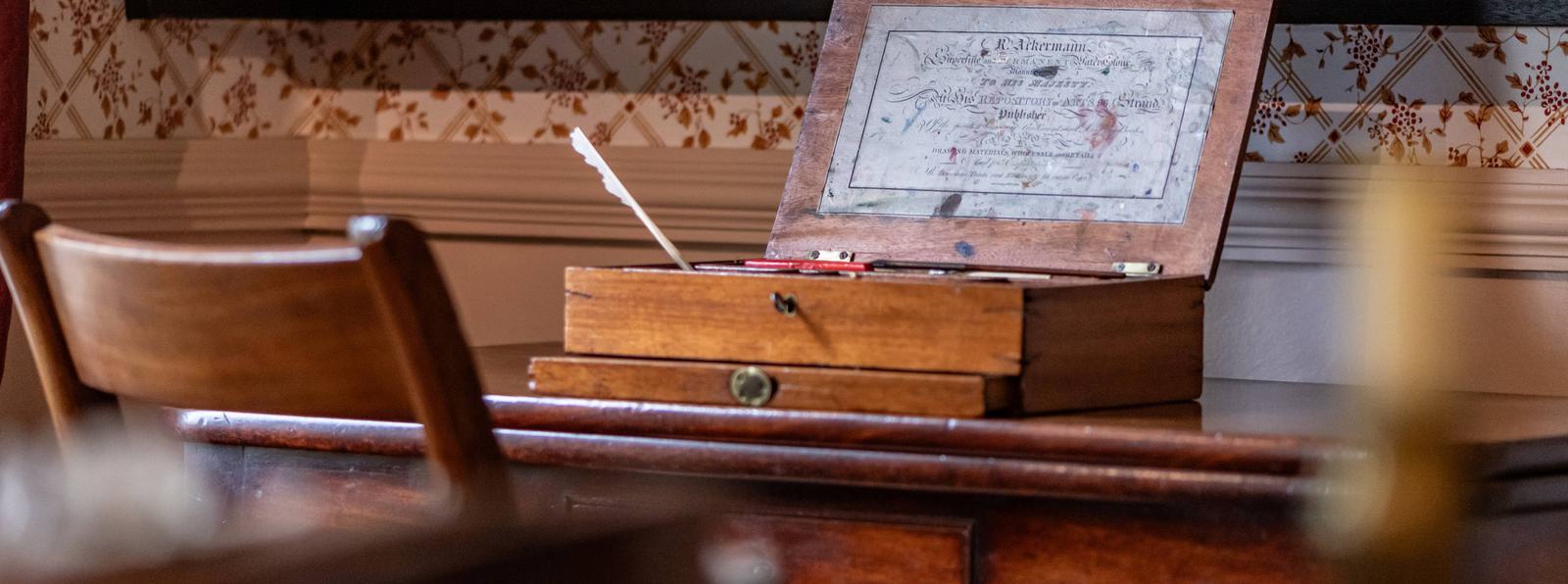
Frequently-asked questions
We hope our FAQs drop-down below will answer your questions. If not, find out how to get in touch here.
FAQs
Can I bring my dog to the Museum?
Much like Emily Brontë, we love dogs - unfortunately though, only service animals are allowed in the Museum. This is because every room has original Brontë items and there are rules around their conservation which don't allow pets. This also applies to all our in-person events, unless stated otherwise.
We'd appreciate it if you could please let us know if you're planning to bring your service animal to the Museum or one of our events.
Thank you for your understanding.
Is there Museum parking?
While we don't have a designated Museum car park, there are several council-owned and privately-owned car parks in Haworth - including opposite the Museum.
Please see our 'Getting here' page for more information on parking and other ways to reach the Museum.
Do you have toilets at the Museum?
Yes, we have visitor facilities on site, including four self-contained cubicles, a disabled toilet, baby changing, and a Changing Places Toilet (CPT). Find out more about Changing Places here. All toilets are gender-neutral.
Do you offer guided tours?
Ours is a self-guided museum, but there are knowledgeable and friendly members of staff situated around the Museum to answer all your Brontë questions!
We do offer private tours on days that the Museum is closed to the public. Please click here to find out more about our private tours.
Is entry to the Museum timed?
No - your ticket gives you entry to the Museum any time between 10am - 5pm.
Last admission to the Museum is at 4pm.
Will I need to queue for entry to the Museum?
Our period rooms in the Museum have limited capacity, so in busy seasons there may be a short wait time in the garden.
Please also note that learning groups and tour groups do take priority as they have timed entry to the Museum. This may result in a short wait time. Our Visitor Experience team will let you know if a group is expected on the day.
Do you have luggage storage at the Museum?
Unfortunately, we are unable to store any bags, luggage or personal belongings due to limited space and security.
We ask that visitors keep their belongings with them at all times during their visit.
I can't visit on my original day of booking. Can I come on a different day with the same ticket?
Absolutely! Your ticket gives you unlimited entry to the Museum for twelve months. Simply show your original ticket or email confirmation to our team when you arrive at the Museum.
Do you have a cafe?
We don't have a cafe at the Museum, however there are plenty of great eateries just a short walk away on Main Street. Find out more about the local area here.

Enrich your research project
Our world-class collections are open to the public. From original Brontë items to leading research publications, we can help further your studies.